Avengers Movies Timeline: How to Watch The Avengers Movies in Order
2018 marked the ten-year anniversary of Marvel Studios and with the impending release of Avengers: Endgame on the horizon, it’s nearly time for fans to dive back to the beginning and re-watch all the films leading up to the culminating event. Kicking back and watching an entire franchise of films is a perfect way to spend a weekend, but the order in which to watch them is not always the easiest. Star Wars, Star Trek, and even The Fast and the Furious have timelines that don’t match up with their chronological releases.
Rather than scouring the internet to find a host of fan opinions, ComingSoon.net brings you the ultimate guide to watching The Avengers movies in storyline order. It gets a little complicated since some of the films run concurrently and realistically some of the movies would need to be spliced together, but here’s our go at it. Release dates are also included just in case you want a more traditional approach to your marathon, and check back here as more Marvel Studios movies are released as we’ll be updating the slideshow!
Which of the Avengers movies are your favorite and why? Sound off in the comments below and let us know!
SPOILER ALERT: Plots and scenes may be described in some aspects of this breakdown. Proceed accordingly.
Avengers Movies Timeline
-
Captain America: The First Avenger (July 22, 2011)
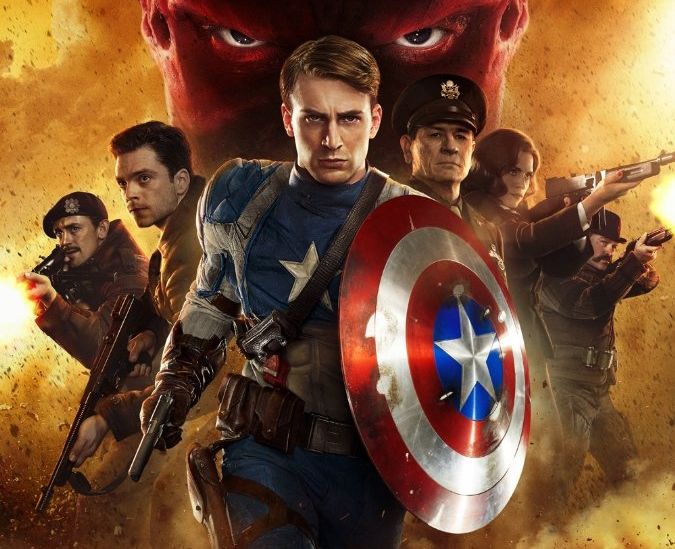
The first Captain America release serves as one big flashback scene, so arguably it could be first, or it could slide in before The Avengers. This is all a matter of preference since the final scene shows Steve Rogers (Chris Evans) awakening from his 70-year slumber. However, since the majority of the plot takes place during World War II, it’s the obvious choice for the starter slot. Plus there’s the introduction of Howard Stark, Tony Stark’s father, played by Dominic Cooper.
-
Captain Marvel (March 8, 2019)
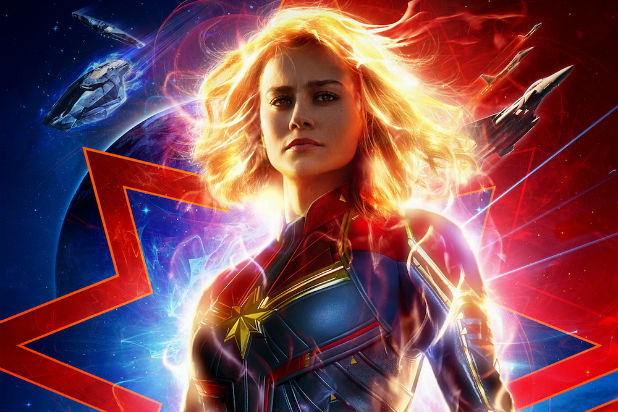
Though the 21st movie in the franchise to be released, chronologically Captain Marvel is set in the 1990s, making it the second movie in the series! The film introduces us to Carol Danvers, the most powerful superhero in the entire MCU while also revealing some prequel details about fan favorites Nick Fury and Agent Coulson. The film also plants the seeds for characters that will return in Guardians of the Galaxy (or rather, returned for this movie!) and potentially even further movies in the series by introducing the Skrulls and other parts of the Kree Empire.
-
Iron Man (May 2, 2008)
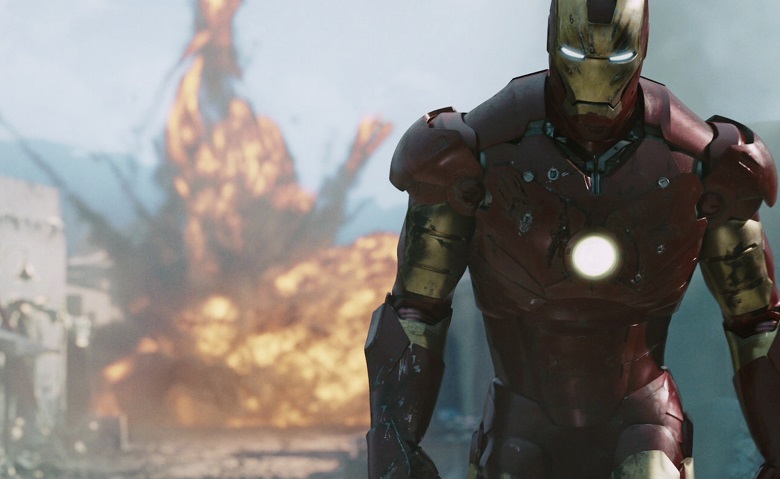
The origin story of Tony Stark (Robert Downey Jr.) was the world’s first introduction to the MCU and, thanks to the film’s now iconic post credits sequence, we also got to meet Samuel L. Jackson’s Nick Fury, who tells Stark that he has just become part of a bigger universe. When you look at the number of entries on this list a decade later, you know he wasn’t kidding!
-
Iron Man 2 (May 7, 2010)

The Marvel saga continues as Tony Stark clashes with Sam Rockwell’s rival tech mogul, Justin Hammer, and Mickey Rourke’s Russian villain, Whiplash. Also introduced is Scarlett Johansson’s Black Widow and a recast War Machine with Don Cheadle stepping into the role originated by Terrence Howard.
Iron Man 2 is where things start to get a little tricky as far as the timeline goes. The film overlaps a bit with both The Incredible Hulk and Thor, but it takes place primarily before both other films.
-
The Incredible Hulk (June 13, 2008)
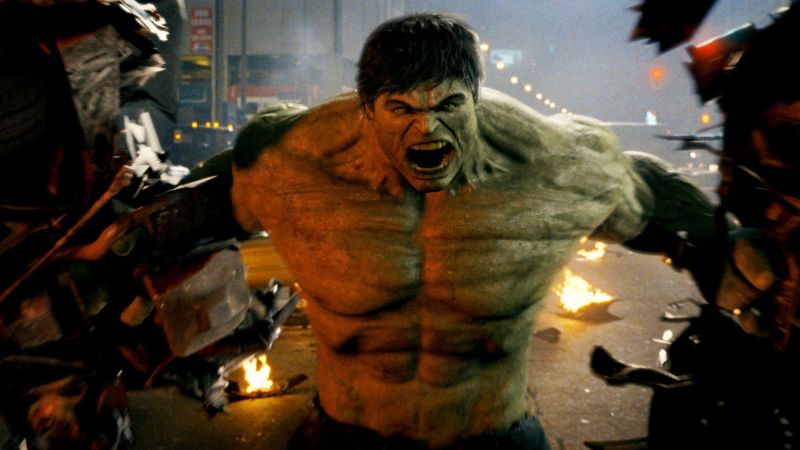
Edward Norton played Bruce Banner and his jolly green alter ego in Louis Leterrier’s MCU-set Hulk reboot. Some of the film’s action overlaps with the timing in Iron Man 2 and Thor, but the stories are entirely separate. There is, however, the first Marvel One-Shot, The Consultant, which takes place before The Incredible Hulk‘s final scene and explains why Agent Coulson (Clark Gregg) decides to send Tony Stark to deal with William Hurt’s General Ross.
-
Thor (May 6, 2011)
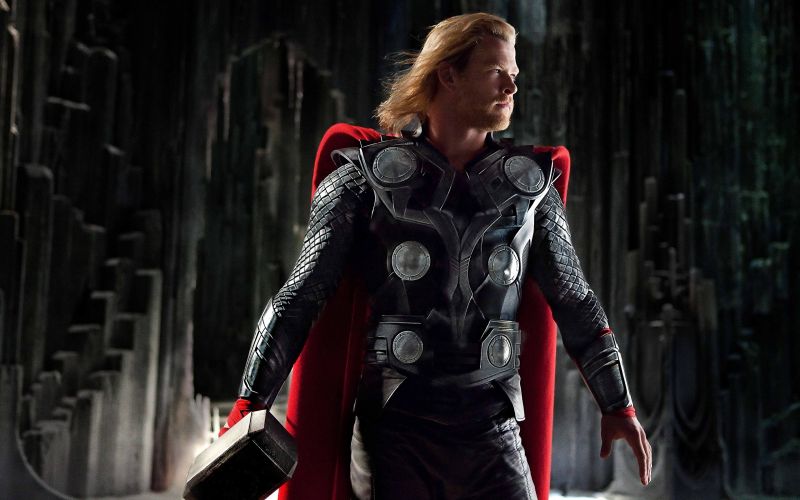
Although Thor may be the next film, the Marvel One-Shot A Funny Thing Happened on the Way to Thor’s Hammer happens just before, bridging the gap between Coulson’s departure from Malibu in Iron Man 2 and his arrival in New Mexico in Thor.
Thor (and it’s sequel, Thor: The Dark World) also contain the very earliest scenes of the MCU. Both films open with narration by Odin (Sir Anthony Hopkins) that showcase Asgard’s role in the cosmos thousands of years prior.
Thor also introduces Jeremy Renner‘s Hawkeye. He appears in a brief cameo, working as a S.H.I.E.L.D. agent.
The post credits sequence of Thor then sets up The Avengers, teasing Loki’s (Tom Hiddleston) quest for the tesseract, later revealed to be the Space Infinity Stone.
-
The Avengers (May 4, 2012)
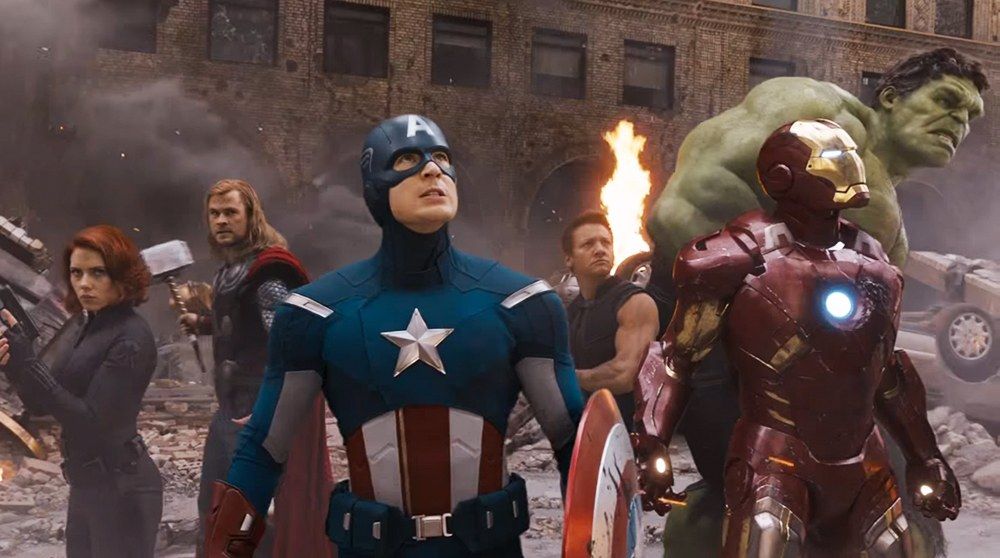
Nick Fury brings the gang together in a quest to fight evil, but it’s just the beginning. The Hulk is recast with Mark Ruffalo, who continues for subsequent films. The Avengers marks the end of the first phase of the Marvel Universe.
Although it isn’t revealed until later, The Avengers introduces a second Infinity Stone with Loki’s staff containing the Mind stone. He uses its power to brainwash characters like Hawkeye.
-
Iron Man 3 (May 3, 2013)
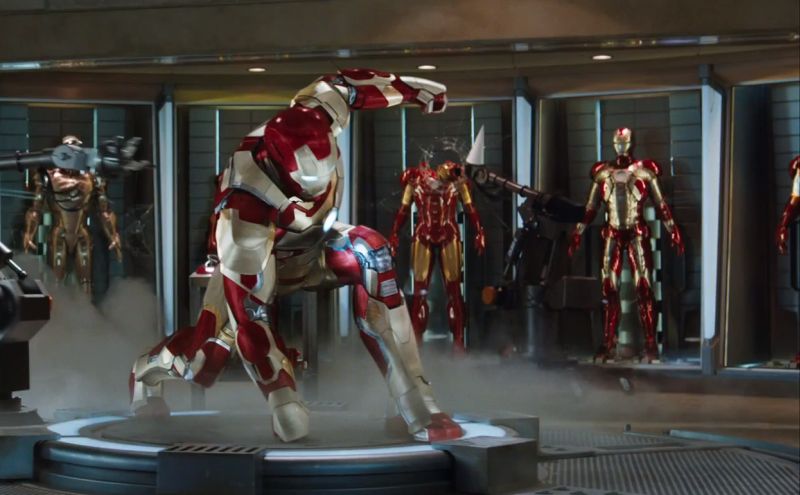
Phase Two of the MCU begins with Shane Black’s Iron Man adventure. Set at Christmas time, Iron Man 3 happens in the wake of The Avengers‘ “Battle of New York” and deals with Tony Stark’s post traumatic stress issues as he faces off against the international terrorist, The Mandarin (Sir Ben Kingsley).
Some fans were let down by the reveal that Kingsley’s Mandarin was just an actor fronting for the real big bad, Guy Pearce’s Aldrich Killian. That’s one of the reasons that Marvel released the One-Shot Hail to the King, exploring the prison life of Kingsley’s Trevor and introducing the idea that a “real” Mandarin is out there in the MCU somewhere.
-
Thor: The Dark World (November 8, 2013)
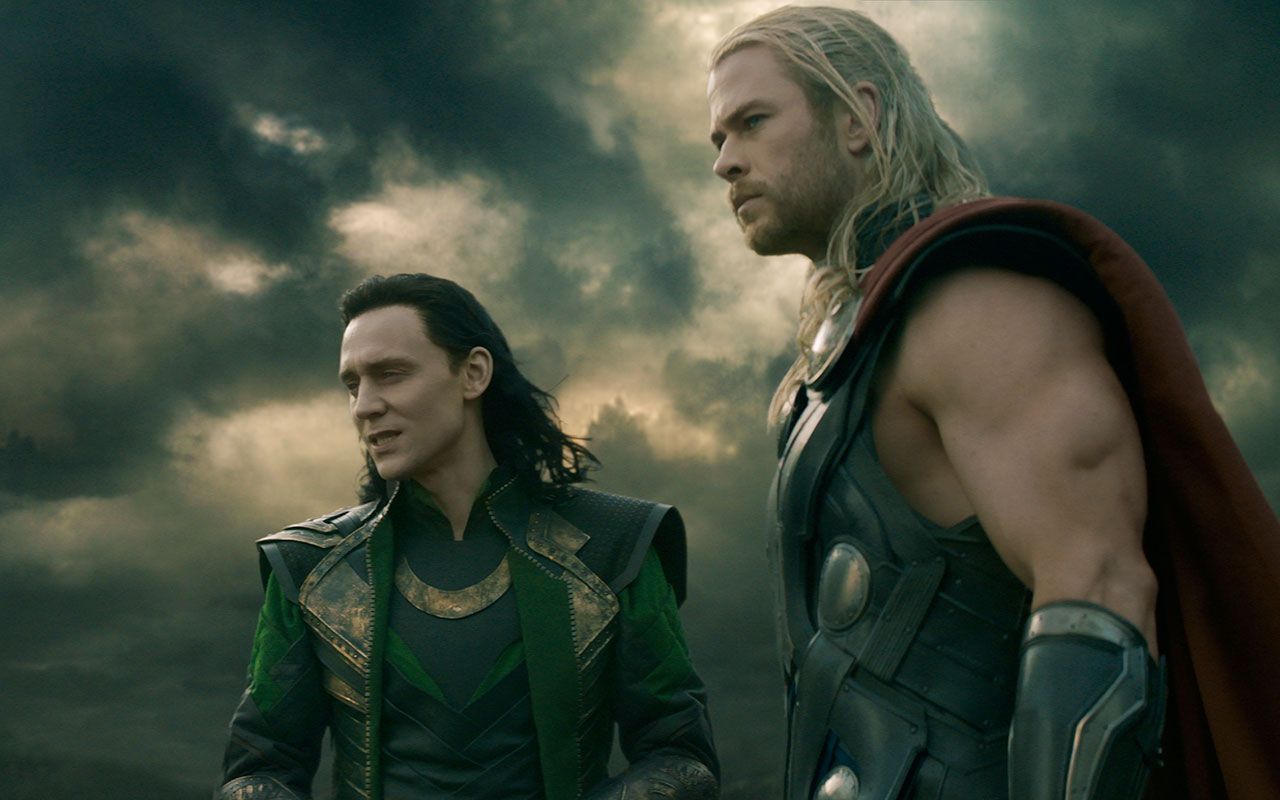
The Dark World introduces a third Infinity Stone with the Aether. Christopher Eccleston’s Dark Elf Malekith seeks to use its power to bring darkness by reshaping reality itself. Naturally, he’s defeated by Thor, but the story ends with Loki having secretly stolen Asgard’s throne.
The Dark World‘s post-credits sequence leads into James Gunn’s Guardians of the Galaxy as The Collector (Benicio Del Toro) is tasked with protecting the Aether and keeping it apart from the Tesseract.
-
Captain America: The Winter Soldier (April 4, 2014)
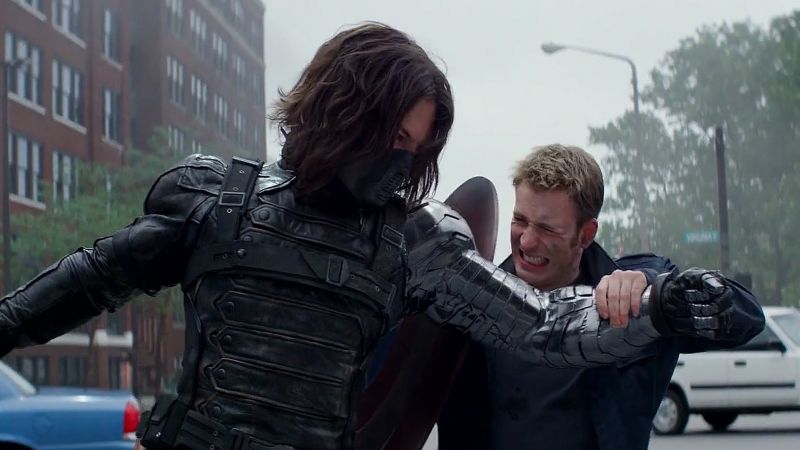
Captain America and Black Widow find themselves on the run from S.H.I.E.L.D. itself when the organization gets taken over by the villainous HYDRA. There’s also the matter of the mysterious Winter Soldier, revealed to be Cap’s brainwashed best friend, Bucky (Sebastian Stan).
The Winter Soldier‘s first post-credits sequence sets up the following summer’s Avengers: Age of Ultron, introducing “the twins” Quicksilver (Aaron Taylor-Johnson) and Scarlet Witch (Elizabeth Olsen).
-
Guardians of the Galaxy (August 1, 2014)
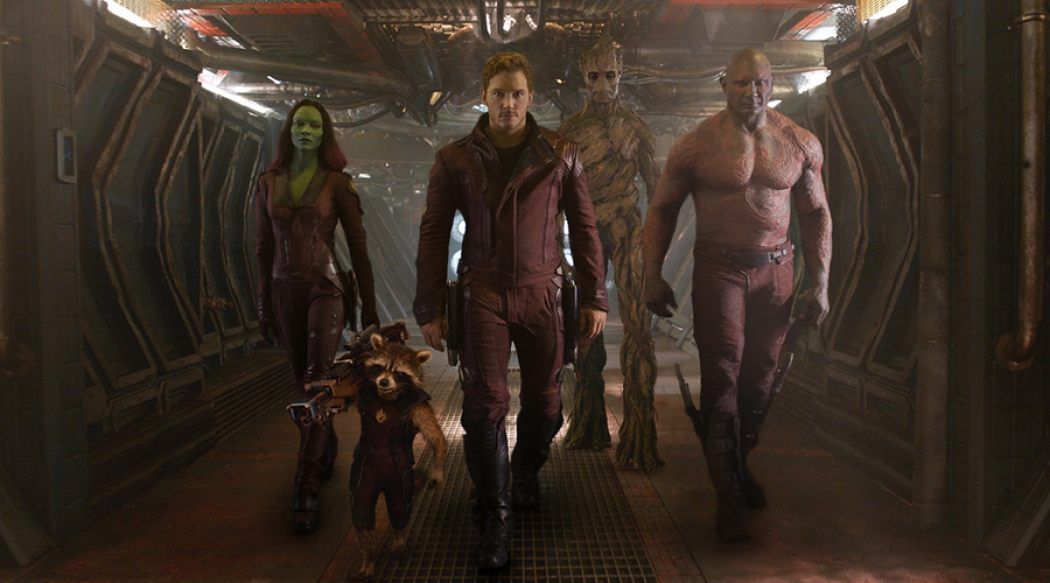
The cosmic side of the MCU expanded with James Gunn’s assembly of intergalactic misfits. It also introduced a fourth Infinity Stone, the Power gem.
Because it’s a bit distanced from what’s happening on Earth, Guardians of the Galaxy roughly takes place around the time that it was released in 2014.
-
Guardians of the Galaxy Vol. 2 (May 5, 2017)
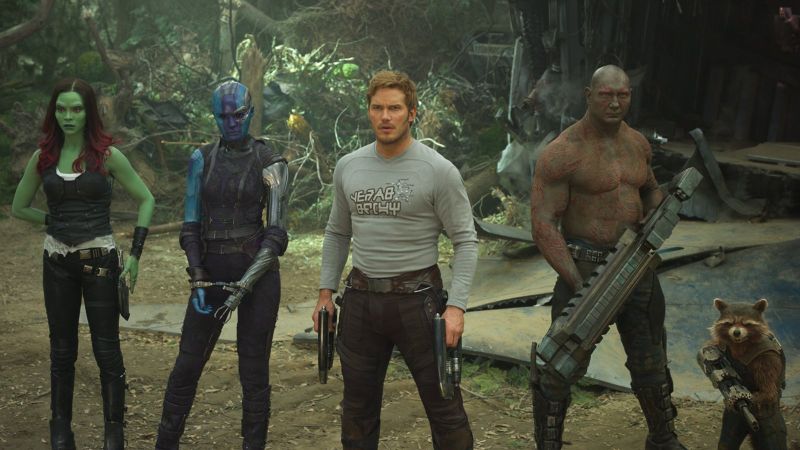
Though released three years after the first film, this sequel takes place just six months after the original film concludes, so pairing them together not only gives viewers a complete picture of the Guardians of the Galaxy and introduces key new characters like Ego and Mantis.
The film's many post-credit scenes (five in total) set the stage for their appearance in the upcoming Avengers: Infinity War and even the inevitable Guardians of the Galaxy Vol. 3.
-
Avengers: Age of Ultron (May 1, 2015)
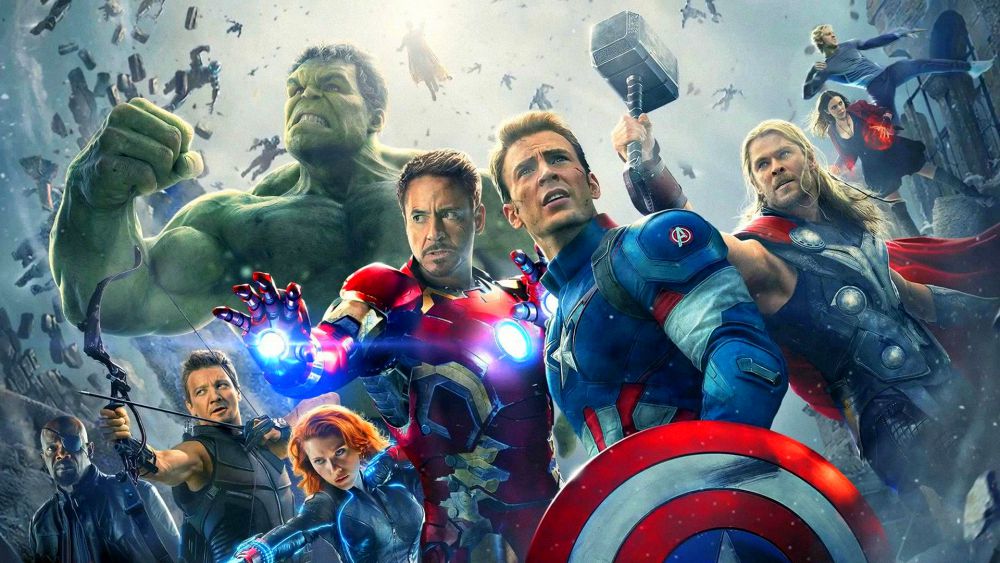
Age of Ultron continues the Avengers movies timeline with the full introduction of Elizabeth Olsen’s Scarlet Witch and Paul Bettany’s Vision. Aaron Taylor Johnson’s Quicksilver, however, doesn’t make it out of the film alive.
Age of Ultron also gives us a brief tease of Wakanda and the supervillain Klaw, played by Andy Serkis. We’ll learn a lot more about Wakanda (and potentially Klaw as well) in 2018’s Black Panther.
-
Ant-Man (July 29, 2015)
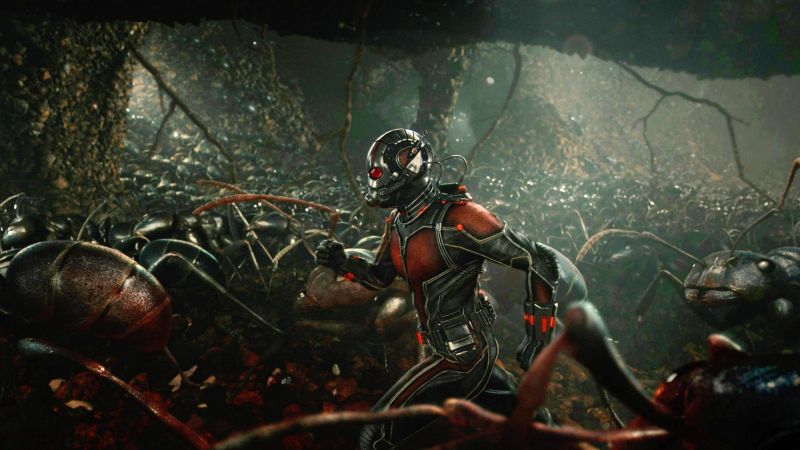
Ant-Man concluded the “Phase Two” wave in the Marvel Cinematic Universe with the introduction of Paul Rudd’s size-shifting superhero. There’s not a whole lot to ground Ant-Man to a specific date, but Ant-Man successfully infiltrates Avengers HQ where Falcon is present so it's not far after Age of Ultron.
-
Captain America: Civil War (May 6, 2016)
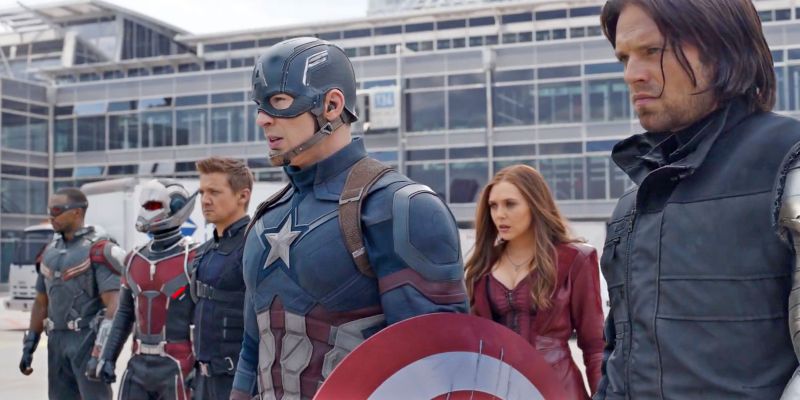
2016’s epic superhero showdown proves exactly how big the MCU can get. The “Phase Three” launcher introduces both Chadwick Boseman as The Black Panther and Tom Holland as Spider-Man.
Civil War takes place not too long after Ant-Man, as we can tell from Falcon’s interaction with the size-shifting hero.
-
Black Panther (February 16, 2018)
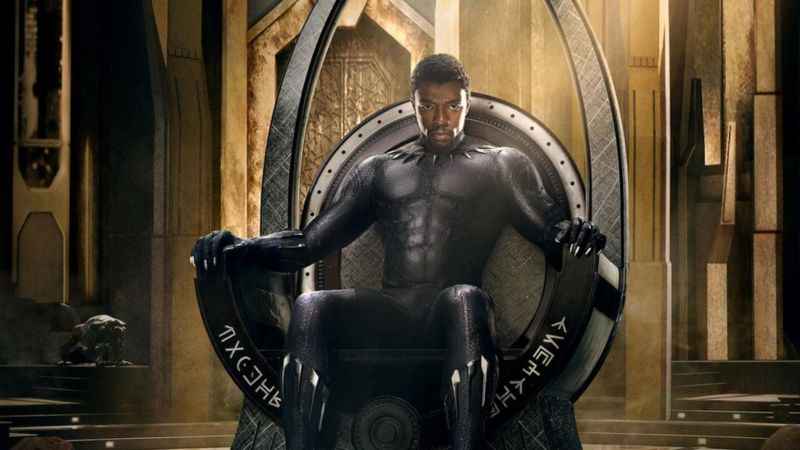
Set just one week after the events of Captain America: Civil War, Black Panther brings the origins of T'Challa full circle by fully revealing the Kingdom of Wakanda and its inhabitants as our hero goes up against the best villain of the MCU, Erik Killmonger. The film also brings one plot thread full circle by bringing back Andy Serkis as villain Ulysses Klaue and Martin Freeman as Everett K. Ross. We're also introduced to new characters like Nakia, Okoye and Shuri who will become big parts of the MCU.
In the film's post-credit scene, Bucky's return for Avengers: Infinity War is officially set.
-
Spider-Man: Homecoming (July 7, 2017)
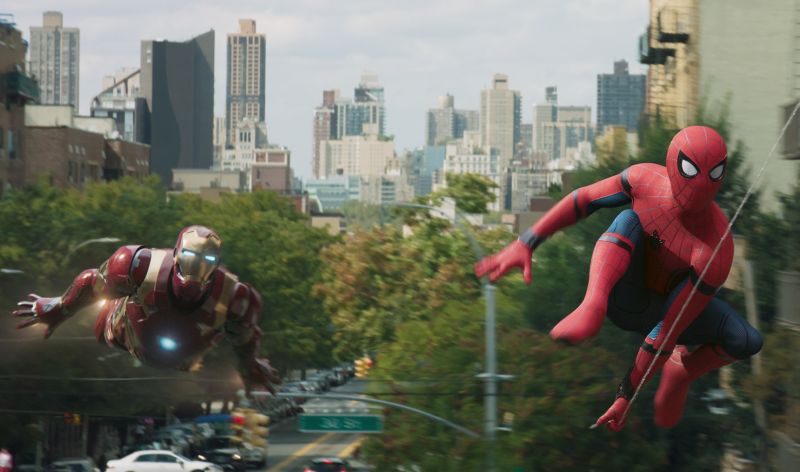
Though released over a year after Civil War, the film overlaps with the Phase Three opener by showing Peter's time in Germany during the film as he waited for his call from Iron Man. After that, it's a hard crash back to reality for the webslinger as he's back in New York and in high school.
The film also includes a sequence set right after the events of Marvel's The Avengers at the very start, but it's a small enough piece of the film that it doesn't change its placement in the viewing order.
-
Doctor Strange (November 4, 2016)
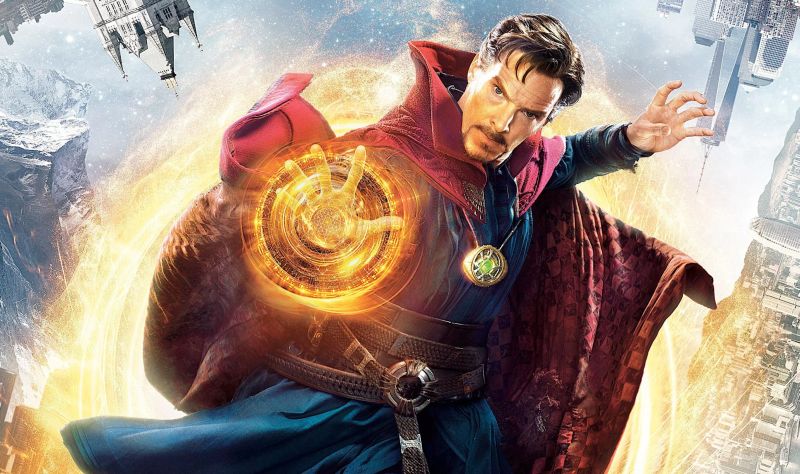
Benedict Cumberbatch’s master of the mystic arts made his debut in 2016's Doctor Strange. It’s unclear exactly how much time Strange’s early life, multiple surgeries, and subsequent training at Kamar-Taj take in the film, but the opening scenes of the movie could be as early as Captain America: The Winter Soldier since the character gets name dropped by Agent Sitwell. The bulk of the picture, however, takes place much later, seemingly after Spider-Man: Homecoming and just before Avengers: Infinity War.
-
Thor: Ragnarok (November 3, 2017)
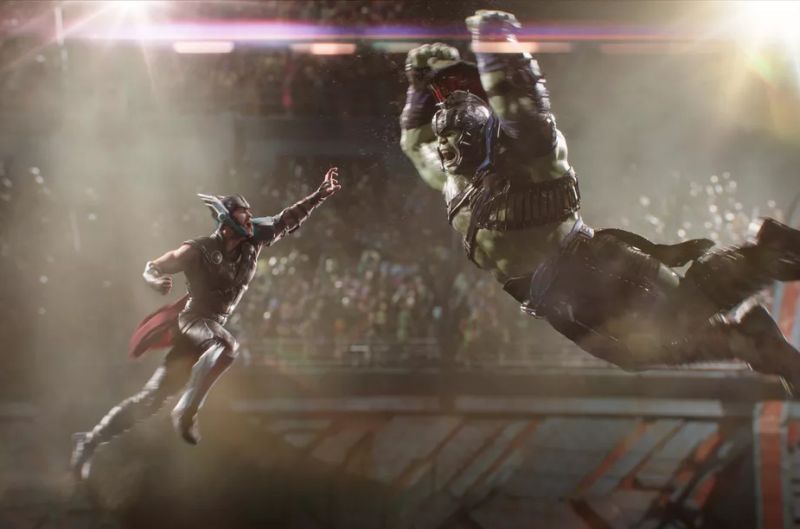
The latest entry in the MCU brings back the likes of Thor, Hulk, Loki, and introduces new characters like Hela and Valkyrie.
We know the film is set two years after Avengers: Age of Ultron as Mark Ruffalo's Bruce Banner reveals he's been in "Hulk mode" for that entire length of time and Thor hasn't been able to locate any of the Infinity Stones.
In a post-credit scene, the now mobile Asgard is faced with a giant space ship. Time will tell whether it is friendly or not...
-
Ant-Man and The Wasp (July 6, 2018)
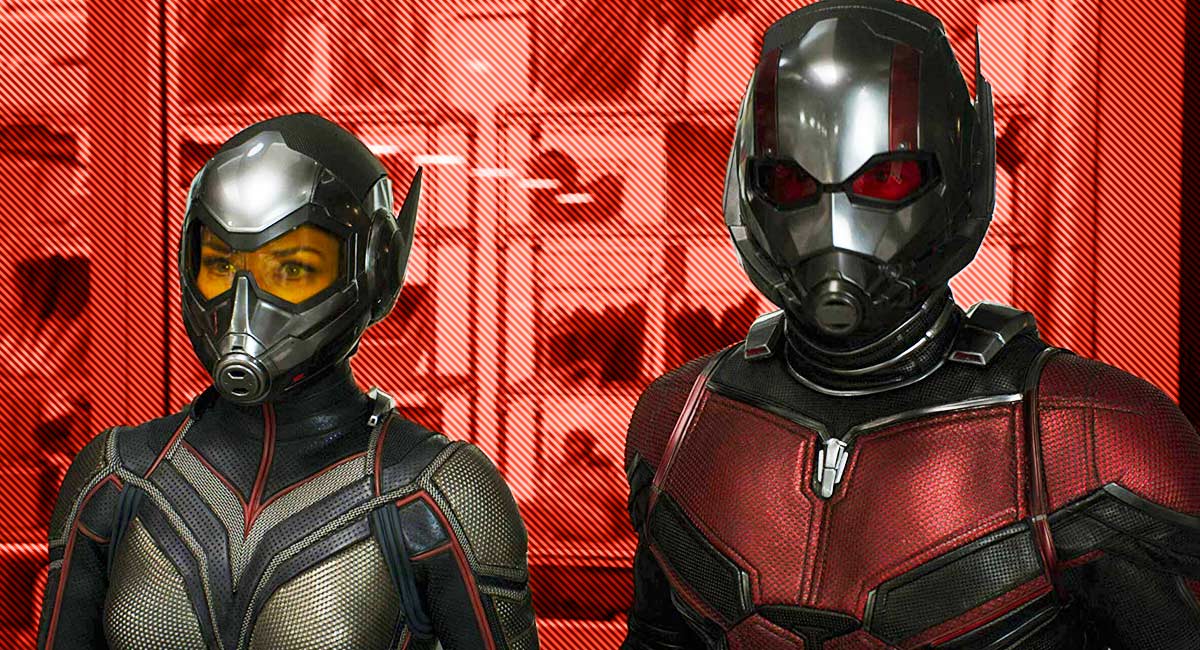
Finally. Evangeline Lilly's Hope van Dyne finally suits up as the titular Wasp and teams back up with Paul Rudd's Scott Lang for a journey both big and small. The pair go up against a new villain in Hannah John-Kamen's Ghost on their way to finally bringing back Hope's mother Janet from the Quantum Realm (played by Michelle Pfeiffer in her return to comic book movies).
Though primarily a story set before the events of Avengers: Infintiy War, its post-credit scene is set just after that culminating event...
-
Avengers: Infinity War (April 27, 2018)
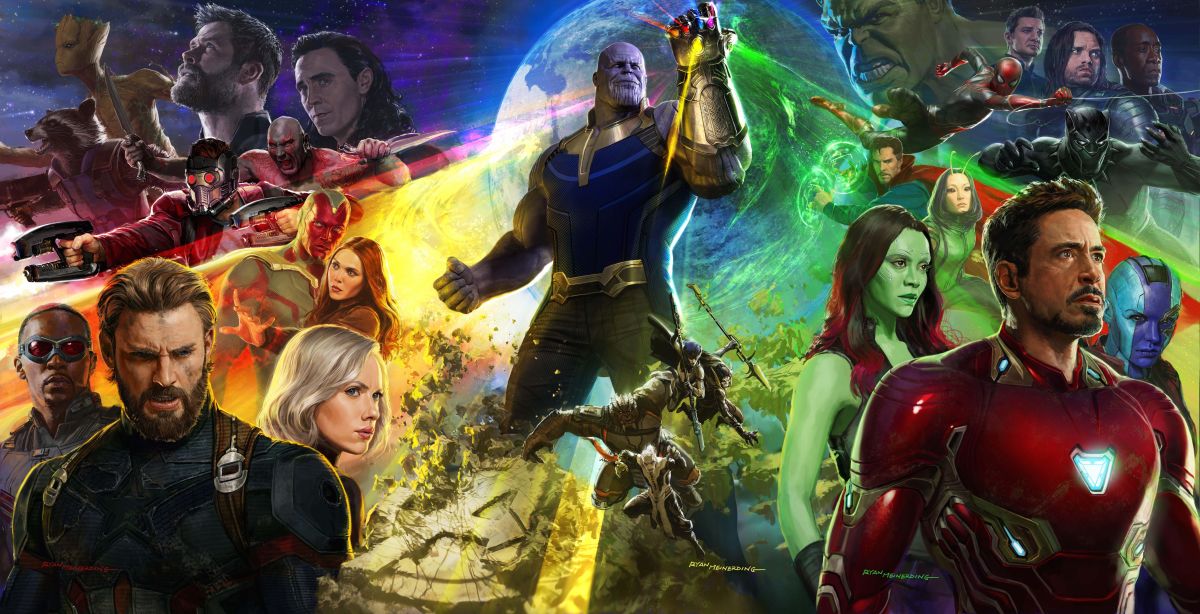
All roads lead here. Thanos has been preparing to find the Infinity Stones and in the opening minutes of this movie he already has two of them. Every corner of the Marvel Cinematic Universe comes together to stop the most powerful villain that it has ever seen. Iron Man meets the likes of Doctor Strange and the Guardians of the Galaxy, Hulk is reunited with Earth's Mightiest Avengers, and the biggest battle of the entire series descends on Wakanda.
And it's all over in a snap....










